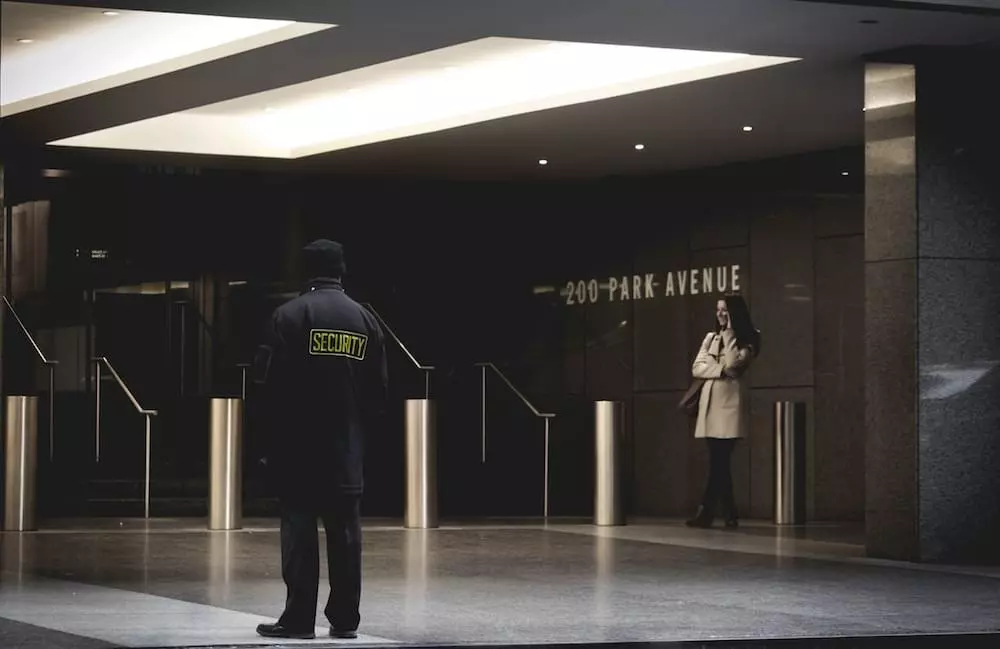How to Choose a DDoS Protection Service for Your Websites
Distributed Denial-of-Service (DDoS) attacks have evolved from simple overloads of firewalls or DNS servers to sophisticated, targeted assaults on enterprise infrastructure and web applications—often originating from within the enterprise itself. This shift is driven by the proliferation of applications and the readily available resources for launching such attacks. The financial consequences are severe: a DDoS attack can cost a business up to $20,000 per hour of downtime, excluding reputational damage and lost future sales.

The rise of application-layer DDoS attacks is particularly noteworthy. Unlike network-layer attacks, application-layer attacks require less traffic volume to inflict significant damage. These attacks exploit vulnerabilities in web applications, databases, and APIs, exhausting server resources and causing service disruptions. This contrasts with perimeter attacks, which focus on overwhelming network infrastructure. Incapsula data reveals a consistent decline in network-layer attacks while application-layer attacks reach record highs (1,099 per week). Experts predict that internet-facing businesses will face multiple DDoS attacks annually.
The surge in application-layer attacks stems from two primary factors: the increasing number of applications deployed by organizations and the readily available resources for hackers. The dark web and readily accessible attack tools have significantly lowered the barrier to entry for launching DDoS attacks.
The cost of a DDoS attack extends beyond direct financial losses. Reputational damage and lost customer trust are significant consequences, regardless of the attack's type. The downtime caused by an attack can be devastating, as illustrated by a U.S. college that experienced a two-day outage, effectively shutting down operations.

The need for robust security measures is paramount, particularly for DevOps teams. Security is often viewed as hindering development speed, but integrating security into the development lifecycle (DevSecOps) is crucial. A Web Application Firewall (WAF) is a key mitigation strategy, filtering traffic and blocking malicious requests before they reach application servers.
Choosing a DDoS Protection Service: Key Considerations
Selecting a suitable DDoS protection service requires careful consideration. Here are essential questions to ask potential providers:
- Crowdsourcing: Does the solution leverage crowdsourced intelligence for enhanced threat detection and response?
- Market Share: What is the provider's market share, indicating the breadth of their threat intelligence network?
- PCI SSC Certification: Is the WAF certified by the Payment Card Industry Security Standards Council?
- On-Premise vs. Cloud: Does the solution offer both on-premise and cloud-based protection to handle various attack vectors?
- Behavioral Anomaly Detection: Does the WAF employ behavioral anomaly detection to identify suspicious traffic patterns?
- Ongoing Monitoring: Is the solution "set and forget," or does it require ongoing human monitoring and adjustments?
A comprehensive solution, such as Incapsula's "Five Ring Approach," combines multiple layers of protection and proactive monitoring to effectively mitigate DDoS attacks. The increasing sophistication and accessibility of DDoS attack tools make proactive protection essential for all online businesses. As stated by Tim Matthews of Incapsula, "It's not a question of if, but rather when you will be attacked."
Frequently Asked Questions about DDoS Protection Services
This section provides answers to common questions about DDoS protection services, covering their importance, functionality, selection criteria, attack types, alternative protection methods, response times, performance impact, cost, guarantees, attack detection, and more. The detailed responses address the various aspects of DDoS protection, providing a comprehensive understanding of this critical security measure. (Note: The original FAQ section is retained in its entirety.)
The above is the detailed content of How to Choose a DDoS Protection Service for Your Websites. For more information, please follow other related articles on the PHP Chinese website!

Hot AI Tools

Undresser.AI Undress
AI-powered app for creating realistic nude photos

AI Clothes Remover
Online AI tool for removing clothes from photos.

Undress AI Tool
Undress images for free

Clothoff.io
AI clothes remover

Video Face Swap
Swap faces in any video effortlessly with our completely free AI face swap tool!

Hot Article

Hot Tools

Notepad++7.3.1
Easy-to-use and free code editor

SublimeText3 Chinese version
Chinese version, very easy to use

Zend Studio 13.0.1
Powerful PHP integrated development environment

Dreamweaver CS6
Visual web development tools

SublimeText3 Mac version
God-level code editing software (SublimeText3)

Hot Topics
 Alipay PHP SDK transfer error: How to solve the problem of 'Cannot declare class SignData'?
Apr 01, 2025 am 07:21 AM
Alipay PHP SDK transfer error: How to solve the problem of 'Cannot declare class SignData'?
Apr 01, 2025 am 07:21 AM
Alipay PHP...
 Explain JSON Web Tokens (JWT) and their use case in PHP APIs.
Apr 05, 2025 am 12:04 AM
Explain JSON Web Tokens (JWT) and their use case in PHP APIs.
Apr 05, 2025 am 12:04 AM
JWT is an open standard based on JSON, used to securely transmit information between parties, mainly for identity authentication and information exchange. 1. JWT consists of three parts: Header, Payload and Signature. 2. The working principle of JWT includes three steps: generating JWT, verifying JWT and parsing Payload. 3. When using JWT for authentication in PHP, JWT can be generated and verified, and user role and permission information can be included in advanced usage. 4. Common errors include signature verification failure, token expiration, and payload oversized. Debugging skills include using debugging tools and logging. 5. Performance optimization and best practices include using appropriate signature algorithms, setting validity periods reasonably,
 How does session hijacking work and how can you mitigate it in PHP?
Apr 06, 2025 am 12:02 AM
How does session hijacking work and how can you mitigate it in PHP?
Apr 06, 2025 am 12:02 AM
Session hijacking can be achieved through the following steps: 1. Obtain the session ID, 2. Use the session ID, 3. Keep the session active. The methods to prevent session hijacking in PHP include: 1. Use the session_regenerate_id() function to regenerate the session ID, 2. Store session data through the database, 3. Ensure that all session data is transmitted through HTTPS.
 What are Enumerations (Enums) in PHP 8.1?
Apr 03, 2025 am 12:05 AM
What are Enumerations (Enums) in PHP 8.1?
Apr 03, 2025 am 12:05 AM
The enumeration function in PHP8.1 enhances the clarity and type safety of the code by defining named constants. 1) Enumerations can be integers, strings or objects, improving code readability and type safety. 2) Enumeration is based on class and supports object-oriented features such as traversal and reflection. 3) Enumeration can be used for comparison and assignment to ensure type safety. 4) Enumeration supports adding methods to implement complex logic. 5) Strict type checking and error handling can avoid common errors. 6) Enumeration reduces magic value and improves maintainability, but pay attention to performance optimization.
 Describe the SOLID principles and how they apply to PHP development.
Apr 03, 2025 am 12:04 AM
Describe the SOLID principles and how they apply to PHP development.
Apr 03, 2025 am 12:04 AM
The application of SOLID principle in PHP development includes: 1. Single responsibility principle (SRP): Each class is responsible for only one function. 2. Open and close principle (OCP): Changes are achieved through extension rather than modification. 3. Lisch's Substitution Principle (LSP): Subclasses can replace base classes without affecting program accuracy. 4. Interface isolation principle (ISP): Use fine-grained interfaces to avoid dependencies and unused methods. 5. Dependency inversion principle (DIP): High and low-level modules rely on abstraction and are implemented through dependency injection.
 How to debug CLI mode in PHPStorm?
Apr 01, 2025 pm 02:57 PM
How to debug CLI mode in PHPStorm?
Apr 01, 2025 pm 02:57 PM
How to debug CLI mode in PHPStorm? When developing with PHPStorm, sometimes we need to debug PHP in command line interface (CLI) mode...
 How to send a POST request containing JSON data using PHP's cURL library?
Apr 01, 2025 pm 03:12 PM
How to send a POST request containing JSON data using PHP's cURL library?
Apr 01, 2025 pm 03:12 PM
Sending JSON data using PHP's cURL library In PHP development, it is often necessary to interact with external APIs. One of the common ways is to use cURL library to send POST�...
 Explain late static binding in PHP (static::).
Apr 03, 2025 am 12:04 AM
Explain late static binding in PHP (static::).
Apr 03, 2025 am 12:04 AM
Static binding (static::) implements late static binding (LSB) in PHP, allowing calling classes to be referenced in static contexts rather than defining classes. 1) The parsing process is performed at runtime, 2) Look up the call class in the inheritance relationship, 3) It may bring performance overhead.






